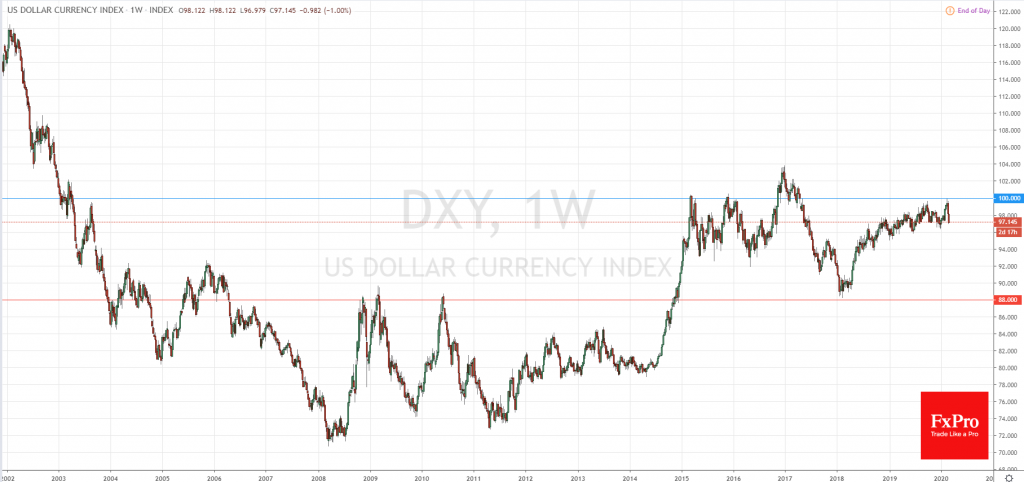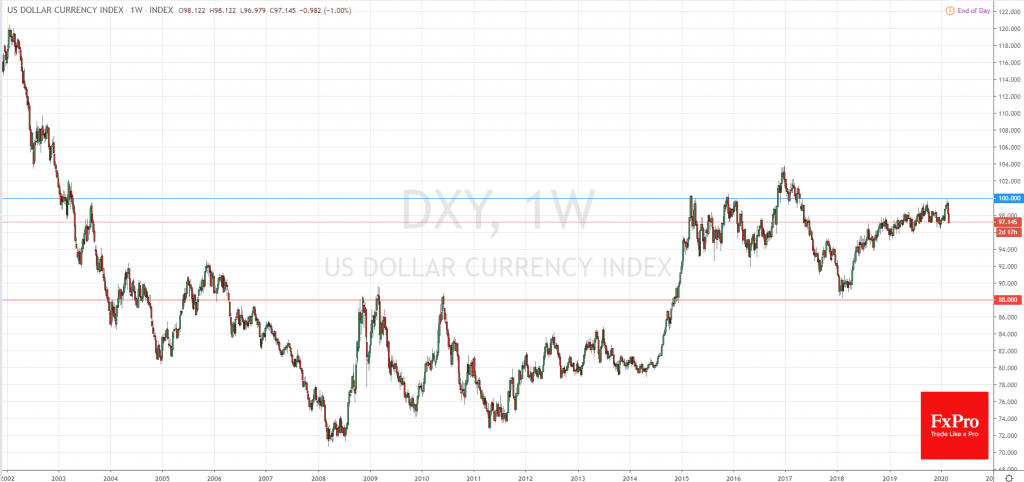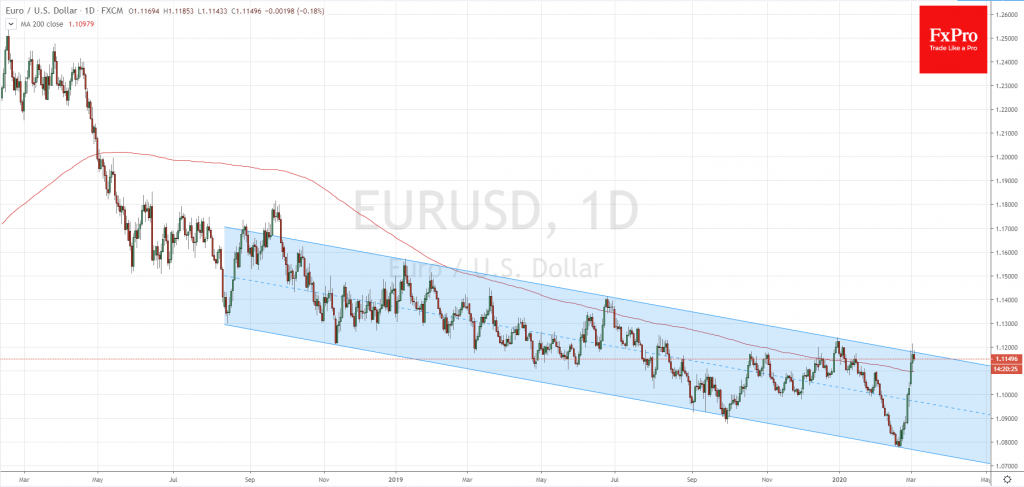Fed cuts hit the dollar but stocks continue bearish trend
March 04, 2020 @ 14:50 +03:00

The emergency interest rates cut from the Fed did not have a lasting impact on markets. And it is surprising if you pay attention to the fact that the last time an unplanned cut in interest rates occurred amid the global financial crisis. However, there are some differences between 2008 and 2020, which probably explain the market reaction.
At that time, all leading central banks, from the Bank of Japan to the Federal Reserve, were simultaneously lowering the rate. The joint statement issued on Tuesday by representatives of finance ministries and central banks of G7 did not contain any concrete steps. Subsequent Fed cut turned out to be somewhat disappointing, as participants did not see similar measures from ECB, Bank of Japan and other major central banks.
The markets show that they demanded much more. Besides, it is worth paying attention to the comments of banking officials, who are not tired of repeating that monetary measures cannot contain the coronavirus. A decrease in rates is not able to reduce the spread of the disease, and also can not affect the consequences of quarantine in specific industries.
A softer monetary policy is a way to revive business activity. However, it will take months before this “cure” fully takes effect. Probably that’s why the Fed was in a hurry to cut the rates, not being able to wait another two weeks before the next meeting.
There is another, more conspiracy reasoning. The Fed’s active steps were a concession to the US government, namely Trump, who openly calls for further rate cuts. The Fed had the opportunity to concede in this regard, as the dollar was at 3-year highs less than two weeks ago, entering an area where it hasn’t stayed long for the last 18 years. Such high levels were a sign of a relatively tighter US monetary policy compared to other regions, giving carte blanche to open criticism. At the same time, the Fed gets the space to ease monetary policy.
If other major central banks do not repeat or exceed the Fed’s actions in the coming days, the US currency risks facing prolonged pressure. The first signal on this way might be the EURUSD strengthening above 1.1200 – previous highs within the descending channel from 2018. Side effects of a systematic and prolonged weakening of the US currency are wide-ranging, including a boost to commodity prices and inflation, as well as returning demand for EM currencies, where at least some yield still exists.
The FxPro Analyst Team








